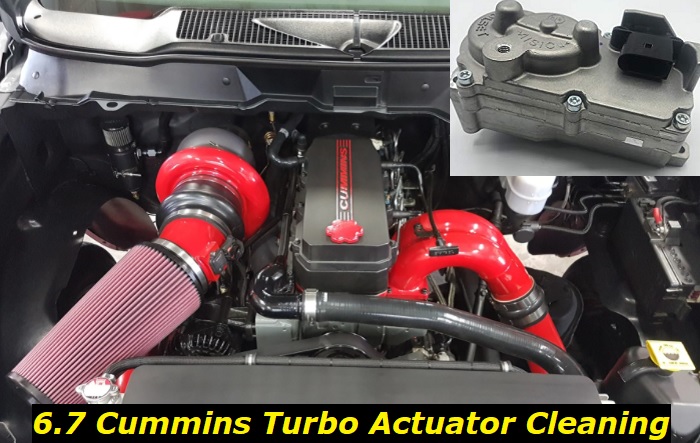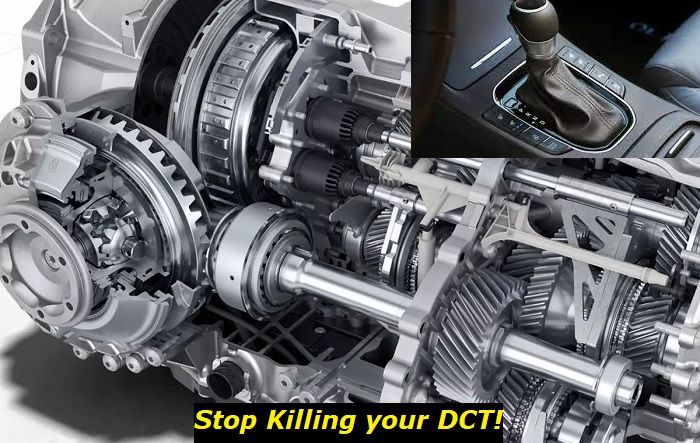The Dodge Ram Heavy Duty Pickups were the first automobiles to employ the 6.7 Cummins engine, which was introduced in the middle of 2007. In addition, the first line of Cummins engines to include a variable geometry turbocharger (VGT) was 6.7.
Key features and my opinion about the engine
- Production years:2007-now
- Average lifespan of 6.7 Cummins:350,000-500,000 miles
- Fuel supply type:Common Rail
- Power range:150-420 hp
- Fuel efficiency:bad
- Engine block material:cast iron
- Engine reliability score:high
- The most common problems:fuel supply issues, head gasket failure, turbocharger problems.

How Does the Cummins VGT Mechanism Work?
On all brand-new diesel trucks, VGT is a good option. Although each manufacturer operates its turbo differently, the primary objective is to alter the exhaust housing size. This alters the exhaust pressure required to turn the turbocharger's turbine wheel.
Imagine the system as a garden hose. Water only pours out a short distance when the faucet is completely opened. To make the hose circle your yard once, you put your finger over the end of it. Although the power of the water pouring out is the same, you have increased it significantly by enlarging the opening. You get the concept, even if this is probably not how engineers would define a VGT.
You would discover a steel ring connected to multiple fins or vanes, as the car industry refers to them if you disassembled a Cummins VGT. The vanes within the housing move toward or away from the turbine wheel as the steel ring rotates.
The vanes are pushed up against the wheel when you accelerate out of a stoplight. They use 100% of the exhaust pressure to spin the exhaust turbine. The actuator moves the vanes off the wheel whenever you reach a particular speed. This allows part of the gas to pass through the turbine naturally, causing the pressure to increase and the boost to accelerate and intensify. Your ECM monitors the exhaust pressure as you drive and adjusts the turbocharger's vanes to maintain it within safe ranges.
And now you know how a Cummins engine's inbuilt exhaust brake works. The vanes move as close as they can to the turbine wheel when you release the throttle, which results in great pressure that prevents you from going ahead. But how does a 6.7 Cummins VGT fail? Read further to find out.
How Does a 6.7 Cummins Turbo Actuator Fail?
Numerous intricate components that must function together make up the 6.7 Cummins turbo actuator system. There are typically two primary issues with a Cummins engine's VGT. Either the steel ring within the turbo becomes caught, or the actuator malfunctions and ceases to communicate with the computer.
Due to this, the Cummins may have several issues, but the exhaust brake is the one that technicians hear about most often. The exhaust brake of a Cummins will either abruptly cease functioning or continue to operate even as the engine accelerates.
If the turbo is at maximum pressure and is jammed closed, this might result in very high-pressure spikes between the engine and the turbo, which could harm your engine. Also, a blown head gasket can occur quickly because of the need to relieve all that pressure in the system.
But before jumping into how you could fix your 6.7 Cummins turbo actuator, let's see how you can clean it in the next section of this article.
Cleaning the 6.7 Cummins Turbo Actuator
Turbochargers are one of the things that people ask mechanic reps about the most. They improve your engine, and we all know how great that feels. But if there is a downside, carbon can build up over time and use, which means the actuator needs to be cleaned and maintained regularly. Don't worry. It's not as terrible as it sounds.
When you go on short trips or stop and start your car, the engine wears out faster because it can't get hot enough to improve how it burns fuel or help burn off carbon deposits. When the engine warms up, it makes more hydrocarbons than when it is cold.
Both fuel and oil are burned in diesel cars to make emissions. The oil that doesn't get caught by the piston rings will:
- Get into the combustion chamber
- Not burn all the way and get stuck in parts like the DPF, turbo, EGR, and other places. Also, the crankcase breather system's re-release could cause oil to build up in the intake system.
When deposits build up in the fuel system and combustion area, they release more hydrocarbons, which end up in places like the turbocharger where they shouldn't be. This is what a turbocharger cleaner can do:
- Unstuck turbocharger vanes that are stuck and won't move
- Remove stuck actuators
- EGR cleaning and stopping carbon buildup
- Provide after-treatment for cleaning up the exhaust
You can clean your 6.7 Cummins turbo actuator:
- As soon as you replace the turbocharger
- Once a month to keep carbon from building up, which could cause the vanes to get stuck
- When the engine sends information about the turbo actuator in the form of codes
How to Clean the 6.7 Cummins Turbo Actuator?
Add an entire bottle (946ml/32oz) to 500L of diesel fuel to keep the turbo vanes from getting stuck and causing expensive repairs. Next, fill the fuel filter to the top and add the rest to 100 liters of diesel fuel to fix serious problems and make cleaning go faster. Then, at least once a month, use the turbocharger to keep it in good shape.
Can You Fix the 6.7 Cummins Turbo Actuator?
People usually want to take off the turbo, take it apart, and clean the steel ring and housing. Indeed, this could help, but most of the time, it won't solve the problem in the long run. This might buy you some time, but do you want to pay a mechanic to take out a turbo, then take it out again when you want to put in a new turbo in two or three months? If time is not the issue and you can do it in your garage at home, it's worth a shot. However, suppose you pay a business to do it. In that case, it could get expensive, especially if there's no guarantee they will fix the problem.
If you're having trouble with your 6.7 Cummins VGT turbo, you're not the only one. You have a few options, such as swapping in a turbo and exhaust brake that doesn't use VGT or changing the VGT actuator and leaving the turbo alone. You can also change the turbo for an OEM VGT turbo.
All these options have pros and cons, but the cheapest way to get the car back on the road is to install this VGT actuator. You only use the gears part of your actuator and replace all the electronics, including the circuit board and motor. This lets you keep costs down and give you a better deal.
Moreover, it's simple to set up and use if you follow the steps below:
- Remove the coolant first.
- Disconnect your old actuator from the turbocharger by removing the four Allen head screws.
- Verify that the gears used to move the vanes can do so smoothly.
- Remove the four Torx bit screws holding the two actuator pieces together.
- To match the new actuator component, use the same four Torx bit screws.
- Replace the screws on the actuator for the turbocharger.
- Add more cooling liquid.
Seeing if the Vanes Work
Before putting the actuator in place, you must look at the vanes. A new actuator can't fix your turbo. If your turbo breaks, you can't change the actuator instead of replacing the turbo. It is essential not to skip this step because putting a new actuator on a broken turbo will break the actuator.
To check the vanes, you should move the gear from one end to the other. At either end, you should hear a loud metallic clang. There shouldn't be any tight spots, and the movement should be beautiful and smooth in every direction.
Even though there is a lot of friction, you should be able to move the gear with your finger fully extended and pressed against the vanes with the side of your finger.
You should move the gear toward the turbo and away from you when testing. You should also check the vanes with the gear in neutral. It's important to remember that the goal is to go smoothly, not to crash. If everything seems fine, you should push it with your hand as hard as possible at both ends of its range of motion. If, after doing that, it gets harder to move away from the stop, you might need a turbo.
If you have a P226C or P226B code, don't fix the actuator until you know your turbocharger is working. These codes often mean that the turbo vanes are broken or stuck.
About the authors
The CarAraC research team is composed of seasoned auto mechanics and automotive industry professionals, including individuals with advanced degrees and certifications in their field. Our team members boast prestigious credentials, reflecting their extensive knowledge and skills. These qualifications include: IMI: Institute of the Motor Industry, ASE-Certified Master Automobile Technicians; Coventry University, Graduate of MA in Automotive Journalism; Politecnico di Torino, Italy, MS Automotive Engineering; Ss. Cyril and Methodius University in Skopje, Mechanical University in Skopje; TOC Automotive College; DHA Suffa University, Department of Mechanical Engineering






Add comment